October 10, 2024 | 19:09 (GMT+7)
Exploring mangrove forest in Ca Mau Cape area
PANO - Touring Ca Mau Cape National Park, tourists can enjoy the mangrove ecosystem, take photos at the Southernmost point of the country, and experience crab catching and fishing with locals.
Below are photos of experiences at Ca Mau Cape National Park.
    |
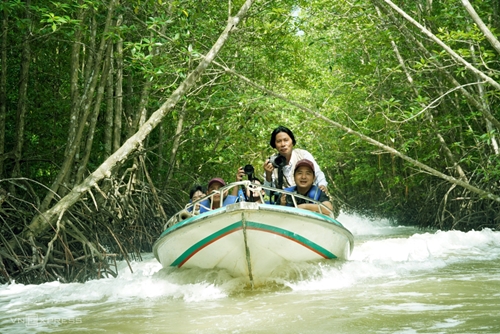 |
|
Launched in 2019, the canoe tour has become a popular tourism product. Tourists can travel on canoes or traditional boats through winding canals flanked by lush mangrove trees. |
    |
 |
|
As tourists venture deep into the mangrove forest, they can stop at various check-in points, cross wooden bridges, and immerse themselves in the fresh natural scenery. This photo shows tourists who have traveled over 20km into the mangrove forest, exploring the Sky Well and primary forest. |
    |
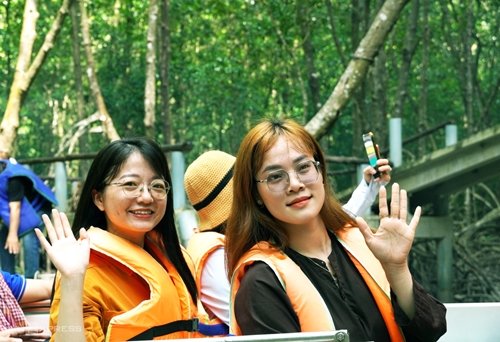 |
|
This is the first time that Pham Thuy Quyen (right) has explored the forest by a canoe. She said that this is an interesting experience, and this tour should be maintained. |
    |
 |
|
Tourists can also visit the Hanoi Flagpole at Ca Mau Cape. The construction of the pole started in 2016 and it was inaugurated at the end of 2019. The structure is located within the Ca Mau Tourism Area, covering over 16,000sq.m. and standing 45m tall. The flag symbolizes the unity of North and South Vietnam and is a must-visit spot for many tourists. |
    |
 |
|
Ca Mau Cape Tourism Area is not only known for its mangrove ecosystem but also historical and cultural sites. The national GPS point GPS0001, one of Vietnam's four furthermost points, is a place many locals aspire to visit at least once in their lifetime. |
    |
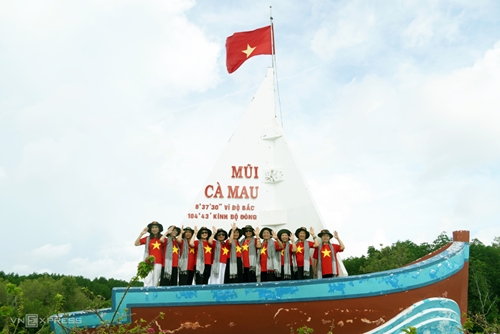 |
|
A ship symbol at Ca Mau Cape is a notable feature of the National Park, attracting numerous visitors for photos. |
    |
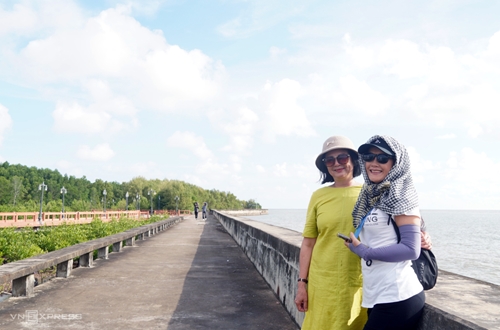 |
|
Yen Thao from Ho Chi Minh City shared her joy of reaching the Southernmost point of the country, saying, "the natural scenery is beautiful. This is the first time I’ve seen such large mangrove trees." |
    |
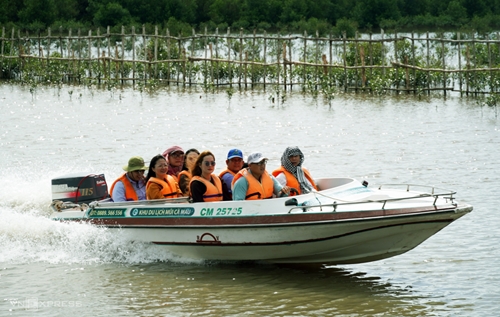 |
|
At the end of the tour, tourists can visit the mudflats of Ca Mau, which provide livelihoods for over 50 households involved in clam farming and other aquatic trades. |
    |
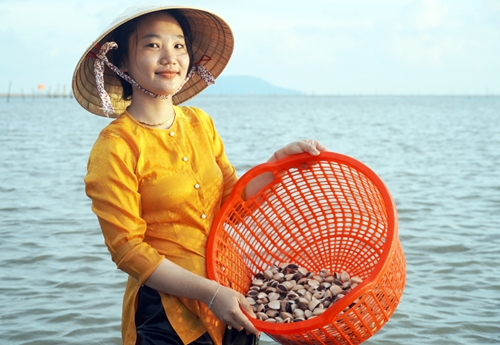 |
|
Engaging in clam harvesting is a close-to-nature activity that tourists can experience. |
Source: Vnexpress
Translated by Tran Hoai